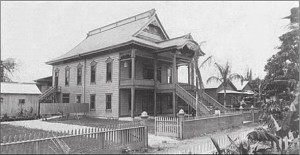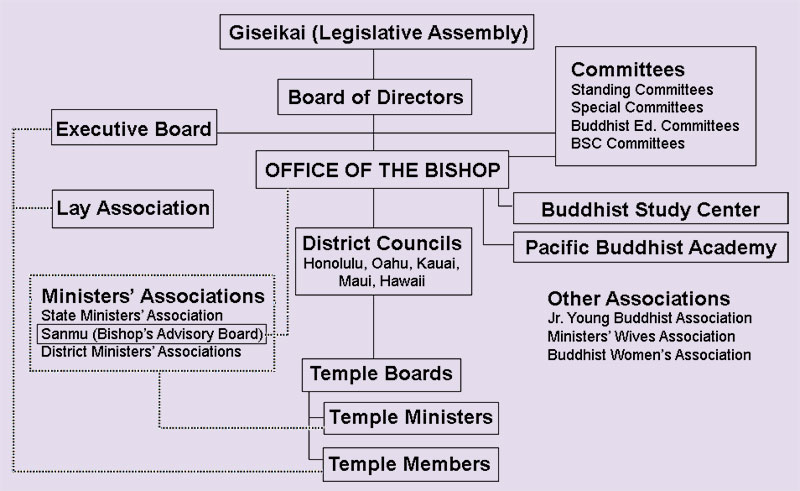
The establishment of Jodo Shinshu Buddhist institutions in Hawaii predates Hawaii becoming part of the United States. When Rev. Soryu Kagahi established the first Japanese Buddhist temple in the Hawaiian Islands in April 1889 (in Hilo), Hawaii was still a sovereign kingdom. The unique historical context and the relatively high concentration of temples established to serve plantation communities in Hawaii are two reasons why the Hawaii Mission (with over 30 temples) and the Buddhist Churches of America (with over 60 temples) remain administratively distinct.

The Mission is the umbrella organization for the more than 30 Jodo Shinshu temples in Hawaii. The Betsuin is one of those temples. The Mission and the Betsuin are two distinct organizations, each with its own budget, board of directors, and office suites. The organizations share a temple campus with Pacific Buddhist Academy.
Originally, the Bishop of the Honpa Hongwanji Mission of Hawaii also served as the chief minister (or Rimban) of the Hawaii Betsuin. The two positions were split by a resolution at the 1975 Giseikai (Legislative Assembly).

The Mission has a democratic governing structure. The legislative body, made up of ministers and representatives from temples throughout the islands, convenes annually in an assembly (known as Giseikai) to pass resolutions and set policy. The Office of the Bishop and many standing and special committees, whose members are appointed by the Bishop, carry out initiatives established at Giseikai and by a Board of Directors that meets regularly throughout the year.
Temples are organized into five districts: Honolulu, Oahu, Kauai, Maui, and Hawaii. Temple boards send delegates to their District Council to promote sharing and collaboration at the district level.
Various associations exist to enrich the lives of Hongwanji members, strengthen the greater sangha, and support the work of the Mission. These include associations for ministers, women, and young people.
